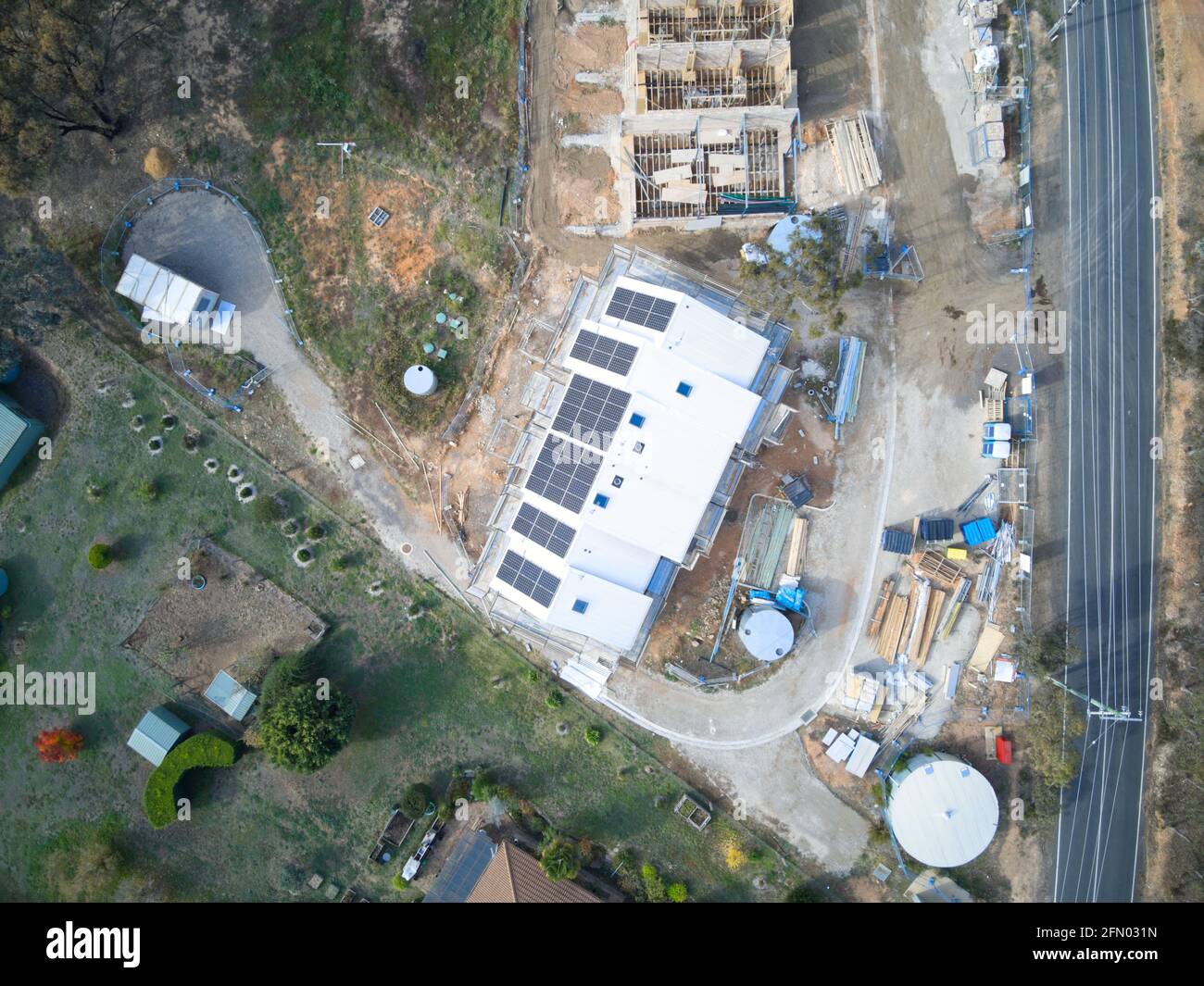As the Australian construction industry embraces game-changing green technologies, discover how this transformation is setting new global standards for sustainable development.
The Economic Power Behind Australia’s Green Building Revolution
The Australian construction industry stands as a colossal force in the nation’s economy, contributing a remarkable AUD 360 billion annually and accounting for approximately 9-10% of the country’s GDP. This economic powerhouse, employing over a million professionals, is rapidly pivoting towards sustainable practices, setting new benchmarks for green building innovation. The sector’s transformation is particularly noteworthy for UK construction professionals and developers, as it offers valuable insights into successful sustainable building strategies that could be adapted for British projects.
The industry’s commitment to sustainability is evidenced by significant investments in green technologies and practices, with major developers allocating substantial portions of their budgets to environmentally conscious initiatives. This shift is driven by both government regulations and growing market demand for sustainable buildings, creating a powerful momentum that’s reshaping the entire sector.
Innovative Sustainable Technologies Transforming Australian Construction
- Smart Building Management Systems: Integration of AI-powered systems that optimise energy usage, reducing consumption by up to 30%
- Renewable Energy Solutions: Widespread adoption of solar panels, wind energy systems, and energy storage solutions
- Sustainable Building Materials: Use of recycled materials, cross-laminated timber, and low-carbon concrete alternatives
- Water Conservation Technologies: Implementation of greywater systems and rainwater harvesting solutions
- Waste Reduction Systems: Advanced recycling programmes and circular economy practices reducing construction waste by up to 40%
Infrastructure and Public Investment: Catalysts for Sustainable Growth
The Australian government’s commitment to sustainable infrastructure is exemplified by a massive AUD 39.2 billion investment in government-backed projects. This unprecedented funding is driving innovation in sustainable construction practices, particularly in transport infrastructure and renewable energy projects. The focus on sustainability in these major infrastructure developments has created a ripple effect, influencing smaller projects and setting new industry standards.
These infrastructure initiatives are particularly relevant to UK construction professionals, as they demonstrate how public investment can catalyse industry-wide adoption of sustainable practices. The success of these projects offers valuable lessons for similar initiatives in the British construction sector.
Residential Revolution: Building Sustainable Communities
- Build-to-Rent Developments: Integration of energy-efficient systems and sustainable materials
- Social Housing Projects: Implementation of passive design principles and renewable energy solutions
- Student Accommodation: Development of zero-carbon buildings and smart energy management systems
- Community-Focused Design: Creation of green spaces and sustainable transport infrastructure
Overcoming Industry Challenges Through Sustainable Solutions
The Australian construction sector has ingeniously leveraged sustainable practices to address persistent industry challenges. Labour shortages are being mitigated through the adoption of prefabrication and modular construction techniques, which not only reduce on-site labour requirements but also minimise waste and improve energy efficiency. Supply chain constraints are being addressed through the use of locally sourced, sustainable materials and the development of circular economy initiatives.
Collaborative Models and Risk Management in Sustainable Construction
The industry’s shift towards more collaborative contract structures has been crucial in supporting sustainable project delivery. These new models emphasise shared responsibility and risk distribution, enabling more innovative approaches to sustainable construction. Key features include early contractor involvement, target cost contracts, and alliance agreements that incentivise sustainable outcomes.
- Risk-Sharing Frameworks: Balanced allocation of sustainability-related risks
- Performance-Based Contracts: Incentives for achieving environmental targets
- Collaborative Design Processes: Integration of sustainability expertise from all stakeholders
Future Outlook: Australia’s Path to Construction Sustainability Leadership
The future of Australia’s construction industry is firmly anchored in sustainability, with projections indicating continued growth in green building practices. The sector is expected to see a 3.8% real growth rate, with sustainable construction playing an increasingly central role. This transformation is creating valuable opportunities for knowledge exchange between Australian and British construction professionals, particularly in areas such as renewable energy integration and sustainable urban development.
Conclusion: Building a Greener Tomorrow
Australia’s construction industry is demonstrating how commitment to sustainability can drive innovation and economic growth while addressing environmental challenges. The sector’s transformation offers valuable lessons for the UK construction industry, particularly in areas of sustainable technology adoption, collaborative project delivery, and green building practices. As both nations strive to meet their climate commitments, the Australian example shows how the construction industry can lead the way in building a more sustainable future.
FAQ
What is the largest construction industry in the world?
China’s construction industry is the largest in the world. The country’s rapid urbanization, economic expansion, and substantial government investment in infrastructure have propelled it to the top.
Sources
[1] https://www.rics.org/news-insights/australia-construction-market-continues-on-its-steady-2025-path
[2] https://www.whitecase.com/insight-our-thinking/constructing-low-carbon-economy-geopolitical-challenges-australias-construction
[3] https://sarens.prowly.com/423704-the-australian-construction-industry-forecasts-growth-of-38-for-2025


Leave a Reply